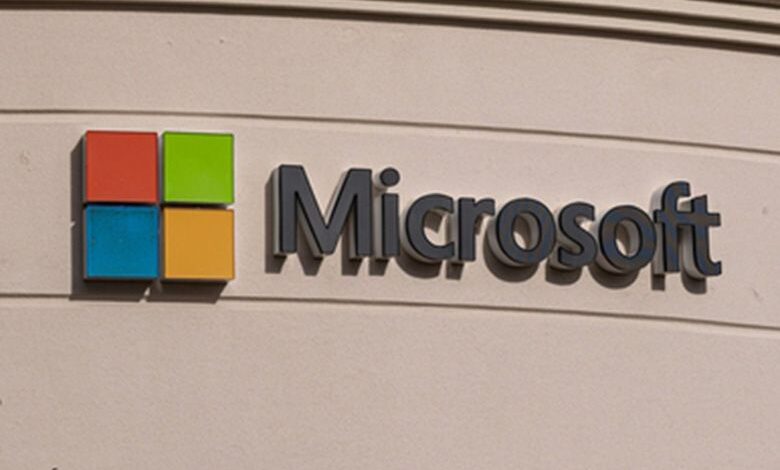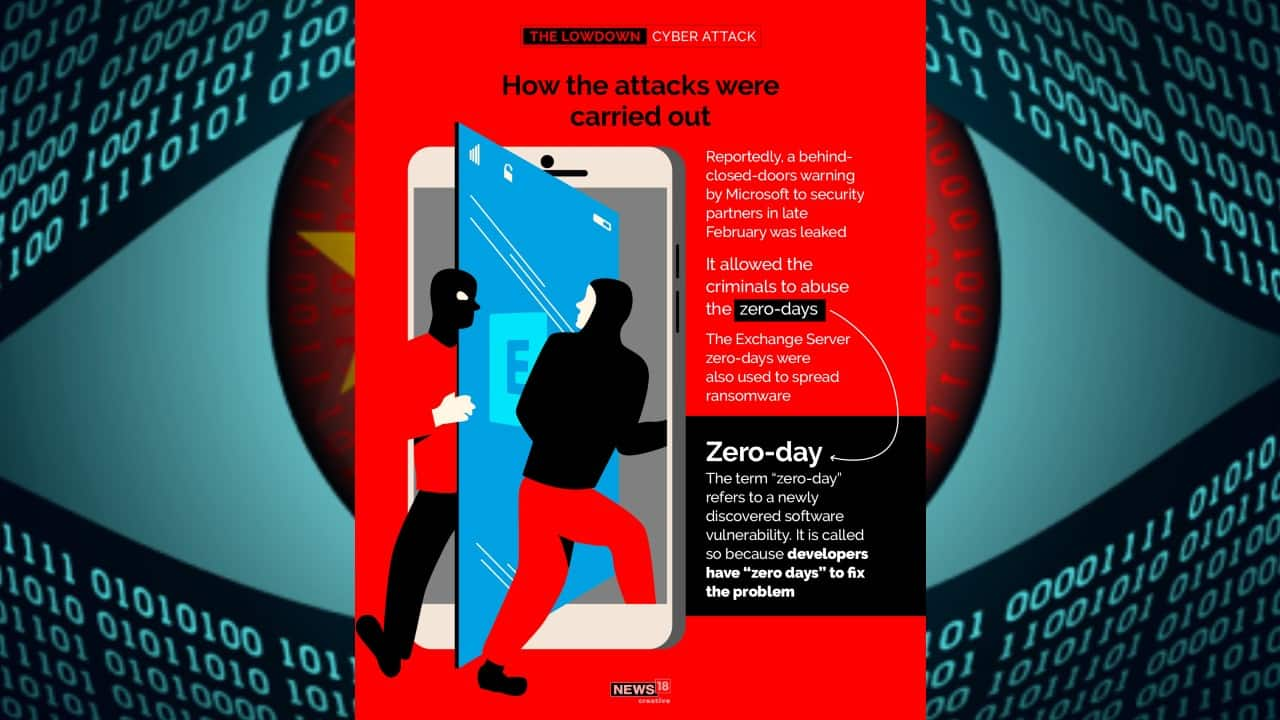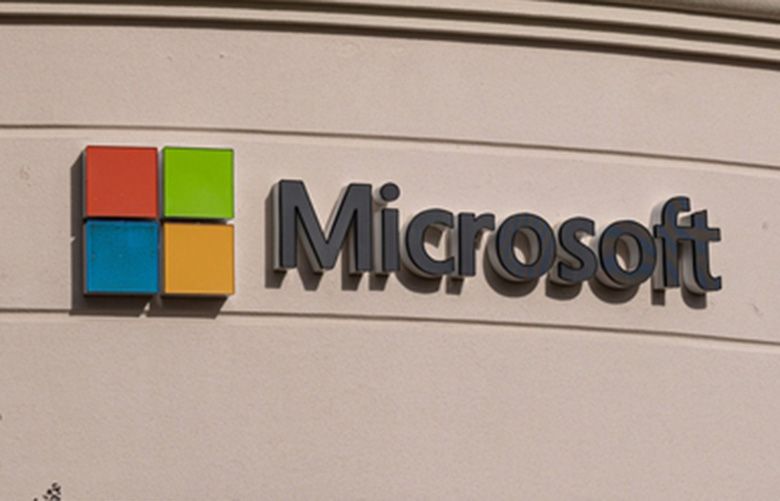
China Email Hack 50 Companies Hit
China email hack on Microsoft Exchange victimizes 50 companies – that’s the shocking headline, and it’s a story that deserves our attention. This massive breach exposed sensitive data across various industries, leaving companies reeling from potential financial losses and reputational damage. We’re diving deep into the details of this attack, exploring the scale of the breach, the suspected actors, and the long-term implications for cybersecurity worldwide.
Get ready for a closer look at this complex and concerning cyberattack.
The sheer number of victims – 50 companies spanning diverse sectors – highlights the widespread vulnerability exposed by this sophisticated hack. We’ll examine the types of data compromised, from intellectual property and financial records to crucial customer information. The financial impact is staggering, considering legal fees, recovery costs, and the potential for long-term damage to brand reputation. Understanding the methods used, the vulnerabilities exploited, and the geopolitical implications are key to preventing future attacks of this magnitude.
The Scale of the Breach

The recent Microsoft Exchange Server hack, affecting at least 50 companies globally, highlights the devastating consequences of large-scale cyberattacks. The impact extends far beyond simple data loss; it encompasses significant financial repercussions, legal battles, and irreparable damage to reputation. The variety of affected businesses, ranging from small startups to multinational corporations, underscores the indiscriminate nature of this sophisticated cyberattack.The potential financial losses incurred by these 50 companies are substantial and multifaceted.
Direct costs include the expenses associated with incident response, such as hiring cybersecurity experts, conducting forensic investigations, and implementing remedial measures. Further financial burdens stem from legal fees, potential regulatory fines (depending on the nature of the compromised data and relevant regulations), and the cost of notifying affected individuals, as required by data privacy laws like GDPR. Beyond these direct costs, the indirect losses are arguably more significant, including loss of business due to disruption, decreased customer trust leading to lost sales, and the long-term impact on brand reputation.
A damaged reputation can take years to rebuild, resulting in a sustained loss of revenue and market share.
Types of Sensitive Data Compromised
The range of sensitive data potentially compromised in this breach is alarmingly broad. Intellectual property, a cornerstone of many businesses’ competitive advantage, is a prime target. This could include trade secrets, patents, research and development data, and confidential business plans. Customer data, encompassing personally identifiable information (PII) such as names, addresses, email addresses, and financial details, is also highly vulnerable.
This type of data breach can lead to identity theft, financial fraud, and severe reputational damage for the affected companies. Furthermore, financial records, including accounting data, transaction details, and payment information, are highly sensitive and can be misused for financial crimes. The potential consequences for both the companies and their customers are significant.
Financial Impact Across Affected Companies
The following table provides a hypothetical estimation of the financial impact and data types compromised, acknowledging the inherent difficulty in precisely quantifying such losses without access to confidential internal data from each affected company. These figures are based on publicly available information regarding similar breaches and industry averages for remediation costs and legal fees.
| Company Size | Industry | Estimated Financial Loss (USD) | Type of Data Compromised |
|---|---|---|---|
| Small (Under 50 employees) | Retail | $50,000 – $250,000 | Customer PII, Financial Transactions |
| Medium (50-250 employees) | Manufacturing | $250,000 – $1,000,000 | Customer PII, Intellectual Property (designs), Financial Records |
| Large (250+ employees) | Technology | $1,000,000 – $5,000,000+ | Customer PII, Intellectual Property (software code), Financial Records, Employee Data |
| Multinational Corporation | Finance | $5,000,000+ | Customer PII, Financial Records, Internal Communications, Sensitive Client Data |
Attribution and Actors
The massive Microsoft Exchange Server hack affecting at least 50 companies in early 2021 was a sophisticated operation, and while the full picture remains complex, significant progress has been made in identifying the likely perpetrators and understanding their methods. Attributing such attacks with complete certainty is always challenging, but the weight of evidence strongly points towards a state-sponsored actor, likely originating from China.The motives behind the attack likely involved a combination of espionage and potentially financial gain.
Access to the compromised servers could provide invaluable intelligence on targeted organizations, including intellectual property, business strategies, and sensitive communications. The attackers also deployed ransomware, indicating a desire for financial leverage alongside the intelligence gathering. The scale of the operation suggests significant resources, including highly skilled personnel, advanced tools, and a well-developed infrastructure. This points towards a well-funded and organized group, consistent with a state-sponsored operation.
Exploitation Methods and Vulnerabilities
The attackers exploited four previously unknown vulnerabilities in Microsoft Exchange Server versions 2013, 2016, and 2019. These zero-day vulnerabilities allowed for remote code execution, granting the attackers complete control over the compromised servers. The specific vulnerabilities involved flaws in the Exchange server’s authentication and webmail functionalities. Once exploited, these vulnerabilities allowed the attackers to install malicious web shells, providing persistent access to the systems.
This allowed them to move laterally within the network, exfiltrating data and installing additional malware.
Technical Details of the Attack
The attack leveraged a combination of sophisticated techniques. The initial compromise involved exploiting the zero-day vulnerabilities to gain initial access. Once inside, the attackers deployed various tools and techniques to maintain persistence, move laterally, and exfiltrate data. These tools likely included custom malware designed to evade detection and custom scripts for automating tasks like data exfiltration and the deployment of ransomware.
The use of web shells allowed for easy access and control, enabling the attackers to remain undetected for extended periods. The attacks demonstrated a deep understanding of Exchange Server architecture and security mechanisms.
Comparison to Similar Attacks
This attack shares similarities with other significant cyberattacks targeting similar infrastructure, notably the SolarWinds attack. Both attacks involved the exploitation of zero-day vulnerabilities in widely used software, allowing for widespread compromise of numerous organizations. Both also involved sophisticated techniques to maintain persistence and evade detection. However, unlike the SolarWinds attack, which primarily focused on espionage, this Exchange Server attack incorporated ransomware deployment, demonstrating a more multi-faceted objective.
The scale of the compromise in both instances underscores the increasing threat posed by state-sponsored actors targeting critical infrastructure. The sophistication and reach of the Exchange Server attack highlight the need for robust security practices and timely patching of vulnerabilities.
Vulnerability and Response
The massive Microsoft Exchange Server hack, impacting at least 50 companies, exposed significant vulnerabilities in the software and highlighted the critical need for proactive security measures. Understanding the weaknesses exploited, the timeline of the attack, and the subsequent response is crucial to preventing future incidents of this scale.The attacks leveraged four zero-day vulnerabilities in Microsoft Exchange Server. These vulnerabilities allowed attackers to gain unauthorized access and control of affected servers.
Specifically, the flaws resided in the Exchange Control Panel (ECP), the Unified Messaging (UM) service, and the Outlook Web App (OWA). Exploiting these vulnerabilities allowed attackers to bypass authentication mechanisms, execute arbitrary code, and install web shells – malicious programs granting persistent remote access to the compromised server. This remote access allowed the attackers to steal sensitive data, install ransomware, and conduct further malicious activities.
Vulnerability Details
The four zero-day exploits were sophisticated, chaining together multiple vulnerabilities for maximum impact. CVE-2021-26855 allowed attackers to gain initial access, while CVE-2021-26857 and CVE-2021-27065 facilitated the installation of web shells. CVE-2021-26858 allowed for arbitrary code execution, enabling attackers to further compromise the system. These vulnerabilities highlighted a lack of robust input validation and authentication mechanisms within the Exchange Server software.
The attackers likely used a combination of automated scanning tools and manual exploitation techniques to identify and compromise vulnerable servers.
Timeline of Events
While the exact timeframe of the initial compromises remains unclear, evidence suggests that the attacks began in early 2021. The initial breaches went largely unnoticed until March 2021, when security researchers and Microsoft began publicly reporting the attacks. Microsoft released security updates on March 2, 2021, addressing the vulnerabilities. However, the widespread nature of the compromise and the delayed discovery meant that many organizations remained vulnerable for weeks or even months.
The public disclosure prompted a flurry of activity as organizations scrambled to patch their systems and assess the damage. The timeline underscores the importance of rapid patch deployment and proactive threat monitoring.
Mitigation and Security Improvements
Microsoft swiftly released security updates to address the vulnerabilities. Affected companies were urged to immediately apply these updates and conduct thorough security assessments. This involved scanning systems for indicators of compromise (IOCs), removing web shells, and restoring compromised data from backups. Many organizations also implemented enhanced security monitoring and threat intelligence feeds to detect and respond to future attacks.
Furthermore, the incident spurred improvements in software development practices at Microsoft, emphasizing rigorous security testing and vulnerability management. This includes strengthening input validation, enhancing authentication mechanisms, and improving overall system security.
The recent China-linked Microsoft Exchange email hack, affecting 50 companies, highlights a critical need for robust cybersecurity. This incident underscores the importance of proactive security measures, and solutions like those discussed in this article on bitglass and the rise of cloud security posture management are becoming increasingly vital. Strengthening cloud security is no longer optional; the fallout from breaches like this one proves it’s a necessity for businesses of all sizes.
Hypothetical Security Protocol, China email hack on microsoft exchange victimizes 50 companies
A robust security protocol for Exchange servers should include several key components. First, a comprehensive vulnerability management program is essential, with regular patching and updates prioritized. Second, multi-factor authentication (MFA) should be mandatory for all users accessing Exchange, significantly increasing the difficulty for attackers to gain unauthorized access. Third, robust intrusion detection and prevention systems (IDPS) should be deployed to monitor network traffic and identify suspicious activity in real-time.
These systems should be capable of detecting and blocking malicious web shells and other indicators of compromise. Fourth, regular security audits and penetration testing should be conducted to identify and address potential vulnerabilities before they can be exploited. Finally, a well-defined incident response plan should be in place, outlining procedures for detecting, containing, and recovering from security breaches.
This plan should include clear communication channels and roles and responsibilities for all involved personnel. Regular security awareness training for all users is also crucial to prevent social engineering attacks.
Geopolitical Implications (China’s Role)
The Microsoft Exchange Server hack, impacting at least 50 companies, carries significant geopolitical weight, particularly concerning China’s alleged involvement. Attributing responsibility with certainty in cyberattacks is notoriously difficult, but the scale and sophistication of this breach, coupled with existing geopolitical tensions, point towards a state-sponsored operation, potentially originating from within China. Understanding the motivations behind such actions and their broader consequences is crucial for navigating the increasingly complex landscape of international relations in the digital age.The potential motivations for a state-sponsored actor, like those believed to be behind this attack, are multifaceted.
Economic espionage is a prime suspect, aiming to steal intellectual property or sensitive business information for competitive advantage. This could range from trade secrets and technological advancements to strategic business plans. Furthermore, such attacks can serve geopolitical goals, potentially disrupting critical infrastructure or undermining the economic stability of rival nations. Information gathered could also be used for political influence or leverage in international negotiations.
Finally, the attack could be part of a broader strategy to test and enhance offensive cyber capabilities, demonstrating technological prowess and deterring potential adversaries.
Motivations of a State-Sponsored Actor
State-sponsored actors often pursue a combination of objectives in cyberattacks. The Microsoft Exchange hack could be viewed as a multifaceted operation, serving simultaneous economic and geopolitical aims. The theft of intellectual property offers direct economic benefits, while simultaneously weakening the competitive position of targeted companies and potentially destabilizing the affected industries. This disruption can indirectly influence geopolitical power dynamics, as weakened economies might be less influential on the global stage.
Moreover, demonstrating the ability to penetrate sophisticated security systems serves as a signal of technological superiority, influencing future calculations of power and risk among nations.
Examples of Similar Incidents
The SolarWinds attack of 2020, attributed to the Russian government, serves as a chilling parallel. This operation compromised thousands of organizations globally through a supply chain attack, demonstrating the potential for widespread damage and the difficulty of attribution. Similarly, the NotPetya ransomware attack in 2017, though initially disguised as a cybercrime operation, is widely believed to have been state-sponsored, causing billions of dollars in damage worldwide.
These incidents highlight the increasing sophistication and destructive potential of state-sponsored cyberattacks, emphasizing the need for enhanced cybersecurity measures and international cooperation.
Potential Long-Term Consequences for International Relations
The long-term consequences of this hack and similar incidents are profound and far-reaching.
- Increased mistrust and escalation of cyber conflict: The incident fuels existing tensions and could lead to a cycle of retaliatory actions, further destabilizing international relations.
- Strengthened cybersecurity norms and regulations: The attack may accelerate the development of international norms and regulations governing state behavior in cyberspace, though enforcement remains a challenge.
- Altered economic and technological landscapes: The theft of intellectual property could significantly alter competitive dynamics in various industries, potentially leading to shifts in global economic power.
- Greater investment in cybersecurity defenses: Governments and businesses alike are likely to increase investments in cybersecurity defenses, leading to an arms race in cyberspace.
- Potential for further erosion of trust in global supply chains: The reliance on global supply chains makes them vulnerable to attacks, and this incident underscores this vulnerability, leading to increased scrutiny and diversification efforts.
Legal and Regulatory Ramifications
The massive Microsoft Exchange Server hack, impacting fifty companies, carries significant legal and regulatory ramifications for both Microsoft and the affected organizations. The incident highlights the complex interplay of international law, data privacy regulations, and corporate liability in the face of sophisticated cyberattacks. Understanding these implications is crucial for future cybersecurity preparedness and accountability.The legal consequences for Microsoft could be substantial.
Depending on the specifics of contracts with affected clients and the extent to which Microsoft’s own security practices contributed to the breach, lawsuits alleging negligence or breach of contract are possible. Regulators, such as the Federal Trade Commission (FTC) in the US and similar bodies in other countries, could investigate Microsoft’s security practices and potentially impose fines for failing to meet adequate security standards.
These investigations might focus on the timeliness of patching vulnerabilities and the effectiveness of Microsoft’s security alerts and responses.
Legal Action Against Perpetrators
Identifying and prosecuting the perpetrators of the hack presents a significant challenge. Attribution is often difficult in cyberattacks, and even when the actors are identified, extraditing them for prosecution can prove extremely complex, particularly if they are operating from a country with different legal systems or a lack of extradition treaties. However, if sufficient evidence links specific individuals or groups to the attack, charges could range from computer fraud and abuse to espionage, depending on the nature of the data stolen and the intent of the attackers.
For example, if the stolen data was used for financial gain, charges of wire fraud or money laundering might be pursued. If the data was stolen for espionage, charges relating to national security violations would be relevant. Successfully bringing these charges to court would require robust evidence demonstrating intent, causation, and the link between the perpetrators and the damage incurred.
Impact of Data Breach Notification Laws
Data breach notification laws, like the California Consumer Privacy Act (CCPA) and the GDPR in Europe, mandate that companies notify affected individuals when their personal data has been compromised. The failure to comply with these laws can result in significant fines. Companies affected by the Microsoft Exchange hack were obligated to comply with relevant data breach notification laws in their respective jurisdictions, which would involve identifying affected individuals, assessing the nature of the compromised data, and notifying them within the legally mandated timeframe.
This process is often complex and resource-intensive, requiring close collaboration with legal counsel and potentially involving significant public relations challenges.
Hypothetical Legal Case: XYZ Corp v. Microsoft Corp.
Let’s imagine a hypothetical case: XYZ Corp, a US-based financial institution, was a victim of the Microsoft Exchange hack. XYZ Corp suffered a significant data breach, resulting in the theft of sensitive customer financial information and reputational damage. XYZ Corp files a lawsuit against Microsoft, alleging negligence in failing to adequately secure its Exchange Server software and promptly patch the known vulnerabilities.
Microsoft’s defense could center on arguments that it provided timely security updates and warnings, and that XYZ Corp failed to implement those updates in a timely manner, thus contributing to the breach. The court would need to assess the evidence to determine whether Microsoft met its duty of care in providing secure software and whether XYZ Corp acted reasonably in its own security practices.
The recent China-linked Microsoft Exchange email hack affecting 50 companies highlights the urgent need for robust cybersecurity. Building secure, reliable internal systems is crucial, and that’s where exploring options like domino app dev the low code and pro code future becomes really important. Ultimately, strengthening our digital defenses against sophisticated attacks like this one is a top priority for every business.
The outcome would depend on the specific facts of the case, including evidence of Microsoft’s security practices, XYZ Corp’s security measures, and the extent of the damages suffered. The case could set a precedent for future litigation involving similar large-scale cyberattacks.
Long-Term Effects on Cybersecurity
The massive Microsoft Exchange Server hack, impacting an estimated 50 companies, has left a profound and lasting impact on the cybersecurity landscape. This breach wasn’t just about stolen data; it exposed fundamental vulnerabilities in widely used systems and eroded trust in established security protocols, prompting a significant shift in how organizations approach their digital defenses. The long-term consequences will ripple through industry practices, regulatory frameworks, and the very nature of trust in the digital world.The incident highlighted the critical need for proactive, multi-layered security strategies.
Relying solely on vendor-provided patches or assuming inherent security in cloud-based services is no longer sufficient. The attack demonstrated the devastating consequences of delayed patch application and the importance of comprehensive threat intelligence and incident response planning. This necessitates a paradigm shift towards a more proactive, preventative approach, rather than simply reacting to breaches after they occur.
Impact on Cloud Security Trust
The breach significantly eroded trust in cloud-based services, particularly among organizations that relied on Microsoft Exchange Online. While cloud services offer many advantages, the incident underscored the fact that they are not inherently immune to sophisticated attacks. The reliance on third-party vendors for critical infrastructure introduces a layer of risk that needs careful management. This has led to a heightened focus on vendor due diligence, contractual clauses outlining security responsibilities, and the adoption of more robust multi-cloud strategies to mitigate vendor lock-in and single points of failure.
The long-term effect will likely involve increased scrutiny of cloud provider security practices and a move toward more stringent auditing and transparency requirements.
Enhanced Cybersecurity Practices
The hack spurred a significant increase in investment in cybersecurity infrastructure and expertise. Organizations are adopting more robust multi-factor authentication (MFA) methods, implementing advanced threat detection and response systems, and investing heavily in employee security awareness training. The need for continuous monitoring and threat intelligence sharing is now widely recognized. Many organizations are also shifting towards zero-trust security models, which assume no implicit trust and verify every access request, regardless of its origin.
This approach limits the impact of a breach by restricting lateral movement within a network. For example, companies are now implementing micro-segmentation to isolate sensitive data and applications, reducing the blast radius of a successful attack.
Lessons Learned and Future Security Measures
Several key lessons emerged from this incident. First, the importance of prompt patch application cannot be overstated. Delays in patching known vulnerabilities create significant windows of opportunity for attackers. Second, robust threat intelligence and proactive security monitoring are crucial for early detection and response. Third, a layered security approach is essential, combining multiple security controls to mitigate risk.
Fourth, regular security audits and penetration testing are vital to identify and address vulnerabilities before attackers can exploit them. Finally, a strong security culture, including comprehensive employee training, is crucial for effective cybersecurity defense. This includes fostering a culture of reporting suspicious activity and promoting a mindset of security awareness across the entire organization.
Best Practices for Enhanced Cybersecurity Defenses
Organizations need to adopt a proactive and holistic approach to cybersecurity. This includes implementing a robust vulnerability management program, regularly patching systems, and utilizing advanced threat detection technologies like intrusion detection and prevention systems (IDS/IPS) and security information and event management (SIEM) systems. Employing a layered security architecture, incorporating network segmentation, data loss prevention (DLP) tools, and robust endpoint security solutions is critical.
Furthermore, investing in employee security awareness training and establishing clear incident response plans is crucial for effective mitigation and recovery. Regular security assessments and penetration testing can help identify vulnerabilities and strengthen defenses. Finally, fostering strong relationships with cybersecurity experts and participating in information sharing initiatives can provide valuable insights and early warning signals.
Closure: China Email Hack On Microsoft Exchange Victimizes 50 Companies

The China-linked Microsoft Exchange hack serves as a stark reminder of the ever-evolving threat landscape in the digital age. Fifty companies, across various industries and sizes, felt the devastating impact of this cyberattack, highlighting the urgent need for robust cybersecurity measures. The potential geopolitical ramifications, legal battles, and the long-term consequences for trust in cloud services underscore the severity of this breach.
Learning from this incident is crucial; strengthening our defenses and fostering greater international cooperation is paramount to mitigating future threats.
FAQ
What specific vulnerabilities were exploited in the Microsoft Exchange servers?
The attack leveraged several zero-day vulnerabilities in Microsoft Exchange Server, allowing attackers to gain unauthorized access and install malware. Specific details are often kept confidential to prevent future exploitation.
What legal recourse do affected companies have?
Affected companies can pursue legal action against the perpetrators, potentially seeking compensation for damages. They may also face legal ramifications for failing to meet data protection regulations.
How can individuals protect themselves from similar attacks?
Individuals should ensure their software is up-to-date, use strong passwords, be wary of phishing emails, and educate themselves on cybersecurity best practices.
What role did Microsoft play in responding to the breach?
Microsoft issued security updates to patch the vulnerabilities and actively worked with affected organizations to help them mitigate the impact of the attack. They also provided guidance on remediation steps.





